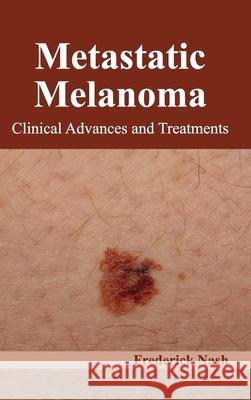Metastatic Melanoma: Clinical Advances and Treatments » książka
Metastatic Melanoma: Clinical Advances and Treatments
ISBN-13: 9781632422767 / Angielski / Twarda / 2015 / 362 str.
This book presents an overview on latest modalities and advances developed for effectively tackling challenges encountered by physicians in dealing with metastatic melanoma. Surgery continues to be the front-runner treatment option for melanoma confined to the main tumor and/or lymph nodes. Results from randomized regulated trials signify that sentinel node biopsy for the treatment of cutaneous melanoma of average thickness has a significant impact on repetition rates, and adjuvant radiotherapy to the regional lymph node areas following surgical resection decreases loco-regional recurrence in patients under great risk of relapse. Electrochemotherapy, isolated limb perfusion as well as photodynamic remedy remain under assessment for curing stage IV disease. The most promising fact related to novel treatments has been regarding targeted therapies for genetic mutations. Specifically, the assuring outcomes of partial and complete tumor reply in stage IV disease from initial phase trials of the B-RAF kinase inhibitors. This book presents a modern insight into the therapeutic treatment options for patients with metastatic melanoma and is significant for researchers as well as clinicians across the globe. An update on present clinical trials for melanoma treatment has been provided in this book along with informative discussions regarding the treatment of uveal and oral melanoma.
This book presents an overview on latest modalities and advances developed for effectively tackling challenges encountered by physicians in dealing with metastatic melanoma. Surgery continues to be the front-runner treatment option for melanoma confined to the main tumor and/or lymph nodes. Results from randomized regulated trials signify that sentinel node biopsy for the treatment of cutaneous melanoma of average thickness has a significant impact on repetition rates, and adjuvant radiotherapy to the regional lymph node areas following surgical resection decreases loco-regional recurrence in patients under great risk of relapse. Electrochemotherapy, isolated limb perfusion as well as photodynamic remedy remain under assessment for curing stage IV disease. The most promising fact related to novel treatments has been regarding targeted therapies for genetic mutations. Specifically, the assuring outcomes of partial and complete tumor reply in stage IV disease from initial phase trials of the B-RAF kinase inhibitors. This book presents a modern insight into the therapeutic treatment options for patients with metastatic melanoma and is significant for researchers as well as clinicians across the globe. An update on present clinical trials for melanoma treatment has been provided in this book along with informative discussions regarding the treatment of uveal and oral melanoma.











